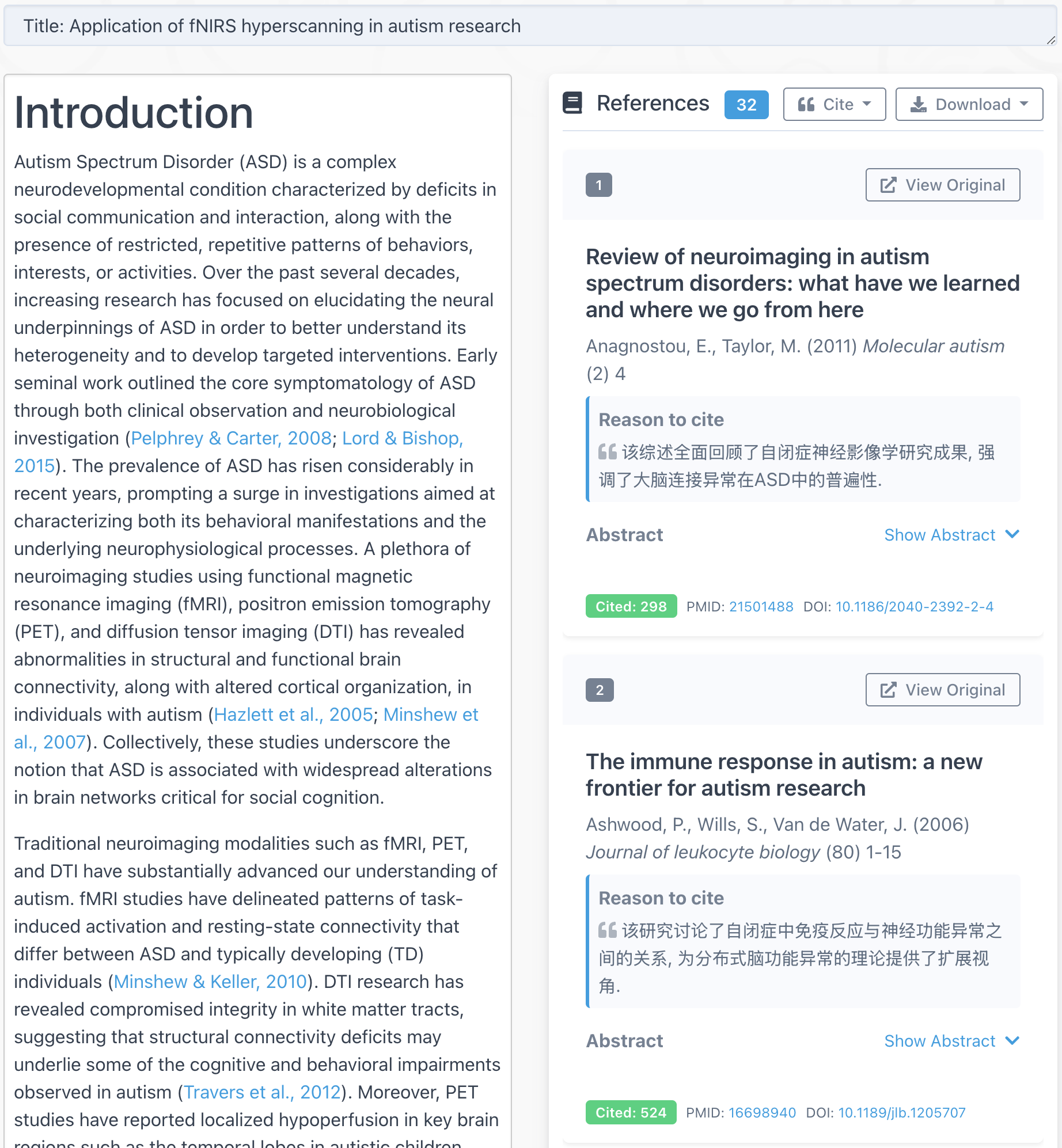A group of scientists in East China Normal University has published a paper earlier this month titled “Dynamic interpersonal neural synchronization underlying pain-induced cooperation in females” in HBM. They studied how pain affected cooperation between female students using fNIRS hyperscanning. We interviewed the authors Chenbo Wang and Xianchun Li and they are generous in sharing their experience about this study.
Congratulations on your recent paper in HBM.
1. What motivated you to study the effect of pain on cooperation? And why to study female only?
Response: Dr. Chenbo Wang is interested in how physical pain influences human cognition and social behaviors. In one of his previous studies, results indicated that acute pain promotes cooperative behavior in social interaction (Wang et al., 2018). On the other hand, Dr. Xianchun Li’s previous works provided an interpersonal neural mechanism of cooperative behavior (Cheng et al., 2015; Pan et al., 2017). Thus, it was a perfect collaboration between the two teams that allowed us to further elucidate the underlying neural basis of pain-induced cooperation.
Female participants only were recruited due to that in previous study, an increased effect of pain on cooperative behavior was observed only in females but not in males (Wang et al., 2018). Although gender differences in pain perception and prosocial behavior was well-documented, we realized that having also males measured would then have made it possible to check the measured results if they comply with this previous finding.
2. 33 pairs of participants is not a small number. How long did it take to collect the data?
Response: It took nearly five months to collect all the data, from the fall of 2016 to spring 2017. Before that, we spent two months to set up the experimental equipment.
3. Compared to 1 person experiment, what are the unique challenges in hyperscanning experiment?
Response: One challenge is related to the experimental design. The paradigm chosen for an experiment should be subtle to interpersonal interaction, either socially or mentally. It should be very cautious to interpret the meaning of the observed interpersonal neural synchronization. Another challenge is regarded to conducting the experiment. It should be verified that the two participants understand the task similarly and perform it on the same page.
4. Why did you not use fMRI hyperscanning?
Response: In our experiment, each pair of two participants sat face-to-face during the cooperative task, which ensured a real social interaction that they performed the task in each other’s presence. However, this real social interaction would be prevented if the two participants lay in two separate fMRI scanners.
5. What was participants’ reaction when they found this would be a “painful” experiment? Do you have any particular example?
Response: Before decided to participate, it was informed that they would receive by a half-chance a moderate pain induced by capsaicin cream. With this expectation, most participants controlled themselves well throughout the whole experiment, although they would feel a little bit annoying.
6. How long did it take to analyze the data?
Response: It took nearly six months to analyze the data.
7. Compared to single subject data analysis, what are the unique challenges in hyperscanning data analysis?
Response: Hyperscanning data analysis depends on an estimator to quantify brain-to-brain synchrony. The most frequently used method is wavelet transform coherence (WTC). Different with that of single subject data analysis, the amplitude of the complex coherence value from two participants is calculated as an index of interpersonal neural synchronization (INS). This method requires choosing a frequency band of interest in which the task-related brain-to-brain synchrony is expected to occur based on previous studies and visual inspection of the data. So how to choose the best and accurate frequency band and how to explain it are unique challenges in hyperscanning data analysis.
8. What software did you use to create figure 5? If you used in-house program, do you mind sharing it?
Response: We applied to an open-source software package called circularGraph, based on MATLAB® (The MathWorks Inc., Natick, Massachusetts) scripts. It can be downloaded for free at https://ww2.mathworks.cn/matlabcentral/fileexchange/48576-circulargraph
9. From the initial submission to the acceptance of the paper, how long did it take? Were the reviewers friendly?
Response: It took 2 months to get the first revision and in total 4 months to receive the notice of acceptance.
Both reviewers provided us with positive comments. One reviewer remarked our experimental paradigm (pain + cognitive task + fNIRS hyperscanning) as being novel. The other reviewer commented that this work could make good contributions to the field. The reviewers raised some concerns regarding to the experimental settings and the procedure, the approach of preprocessing, and the method of FDR correction, all of which significantly helped improve the manuscript. For example, we conducted additional artifact rejection procedures (PCA method) to remove flow oscillations or other global systematic components and reanalyzed our data.
10. Can you use one sentence to summarize your finding in this study?
Response: When a dyad in painful state performing a cooperation task, their cooperation rate was improved across time; simultaneously, the interpersonal neural synchronization (INS) occurred successively at bilateral prefrontal cortex and right parietal cortex, along with increased fronto-parietal associations.
11. What is your plan for future research?
Response: There are three lines of future research. First, to replicate this finding by using EEG-based hyperscanning technique, providing extra information with ERP components and frequency band of high temporal resolution. Second, as we proposed in the current study that individuals in pain was “motivated” to cooperate; we were particularly interested in how pain would modulate neural activities in brain regions including ventral striatum and medial prefrontal cortex in the motivation and reward system, with fMRI technique. Third, it is encouraged to critically compare the effect of acute pain with chronic pain, by using the identical cooperative task.





